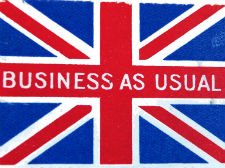Uncategorized
Report: Business as Usual
On 13, May 2016 | In Uncategorized | By Nicola Gauld
Report on Business As Usual: Institutional Impact in the First World War, Conference held at University of Glasgow, 18 March 2016
Remit
This day conference brought together researchers from a variety of disciplines to examine the role of institutional involvement in an individual’s experience of the First World War. We considered submissions covering all types of institution from educational establishments, churches, professional bodies, clubs and societies, to commercial and industrial companies and other workplaces.
Proposals were submitted from researchers in the subjects of History, Archaeology, Social & Economic History, and Theology, as well as individuals working in cultural heritage management, museums, archives, schools, and community research projects.
Suggested themes included, but were not limited to, the following:
- mobilisation and recruitment at institutions, from obstruction to encouragement to outright coercion
- incidence of colleagues joining up together and the impact this has on the institutional community
- what life was like for those left behind in the institutional environment
- how institutions coped (or failed to cope) during the war years
- resuming life (or not) within the institutional community after demobilisation
- changes and adaptations within institutions due to war, such as shifting demographics or policy changes
- institutional relationships with all members of their internal communities, from soldiers at the front to conscientious objectors and non-combatant and “enemy aliens”
- commemoration and memorialisation of individuals within an institutional community
Structure
This one-day symposium was hosted by the University of Glasgow and funded by Glasgow University’s Great War project in partnership with the Faith in the First World War strand of Voices of War and Peace.
The symposium attracted thirty-six attendees from 11 different institutions, as well as members of the public. Attendees were mostly from HEIs (Universities of Glasgow, Glasgow Caledonian, Strathclyde, Dundee, Stirling, Glasgow School of Art, also including representatives from the Universities of Glasgow and Strathclyde Archives and the Scottish Business History Network). Three cultural heritage institutions (Culture North Lanarkshire, Maclean Museum, and a paper submitted in absentia from the Carnegie Museum of Art), one professional organisation (Judicial Institute for Scotland) and one secondary school (Stewart’s Melville College) were also represented.
The papers presented covered a varied range of subject areas and whilst the geographical focus tended to be Scottish, international links were explore, including institutions in Turkey, Italy and the United States, as well as international connections via Scottish businesses.
Discussion
Discussion was wide-ranging with meaningful contributions from the audience, including academics, students, and members of the public. Discussion focused on how and why military and civilian participants were recruited (or not) in the First World War. Furthermore, discussion of issues of dissent, especially resistance to recruitment and post-war memorialisation, were substantive and thought-provoking. Discussion of international connections brought up many questions and highlighted the need for further enquiry.
Despite the varied nature of the subjects presented, overarching themes were identified, making conversation easy and showing the very real potential to develop further research. The theme of institutions and war is under explored yet works well across disciplinary boundaries. While the symposium sought to interrogate ‘business as usual’ during the war, the overall outcome of the day was the idea that there was no longer an understood ‘usual’ during or after the war, but rather a ‘new normal’ as institutions found different ways to cope with the events of 1914-8 and their repercussions.
Outcomes
This was a rewarding and thought-provoking event. This is seen as a starting point for further interdisciplinary collaboration, with the view to a publication (special edition journal or stand-alone volume). Furthermore, the group of individuals both presenting and in attendance, will serve as the core for future events, ideally in partnership with the Scottish Business History Network.
Media and Social Media
The event proved to be of interest to a wide range of individuals. It was featured on STV news on 1/3/2016, as well as featured on the History Scotland website. It also generated a lot of interest on social media, with the symposium’s hashtag #WW1business trending on Twitter in Glasgow, and live Tweets from the day being highly visible (see a Storify summary here).



